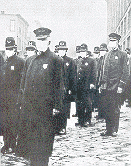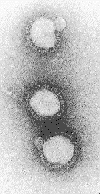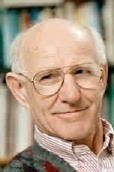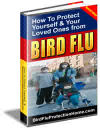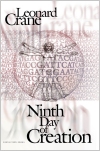|
The 1918 Spanish Flu Pandemic, and the Emerging Swine Flu PandemicMankind's most devastating recorded global epidemic, and its latest close call
URL: http://www.ninthday.com/spanish_flu.htm
--Isaac Starr, 3rd year medical student, University of Pennsylvania, 1918. By the fall of 1918 a strain of influenza
seemingly no different from that of previous years suddenly turned so deadly, and
engendered such a state of panic and chaos in communities across the globe, that
many people believed the world was coming to an end. It would later be characterized
as a human-to-human transmissible case of swine flu.
|
||||||
|
Not only was the Spanish Flu
(as it came to be known)
strikingly virulent, but it displayed an unusual preference in its choice of
victims---tending to select young healthy adults over those with weakened immune systems,
as in the very young, the very old, and the infirm. The normal age distribution for flu
mortality was completely reversed, and had the effect of gouging from society's
infrastructure the bulk of those responsible for its day to day maintenance. No wonder
people thought the social order was breaking down. It very nearly did. But at the close of the First World War, when Spanish Flu appeared, the world was a very different place. Since then, outstanding advances in our knowledge of the germ world have been made, adding dramatically to our repertoire of medical wizardry. Surely what happened back then couldn't happen again. Or could it? During the 1918-1919 fall period the number of Americans who died from influenza is estimated at 675,000. Of those, almost 200,000 deaths were recorded in the month of October 1918 alone. Worldwide, the mortality figure for the full pandemic is believed to stand somewhere between 30 to 40 million. So, with the world population today having more than tripled in the intervening years, what is to stop a modern flu pandemic from claiming upwards of 100 million lives? The answer, it seems, is nothing at all. |
||||||
|
Today, of course, we have vaccines and antiviral drugs. But in the Third World, at least,
these combatants are in very short supply. In India, where the Spanish Flu
is thought to have culled more than 10 million from the population, public health care
is still notoriously deficient. In China, with a population one third larger again,
the situation is not much better. Even for developed countries, where vaccines are
readily available, the fraction of the population that routinely subjects itself
to inoculation generally hovers around 10 percent. In the event that the public were
to receive adequate warnings of an impending pandemic, it's likely of course
that this number could be significantly increased. But even then, it may not matter.
By their nature pandemics tend to take us by surprise. The next influenza strain
that ravages the human population will probably not be the one we were planning to
encounter. If all this seems a little alarmist in nature, consider for a moment the initial bird flu controversy that Robert Webster, chairman of the Department of Virology and Molecular Biology at Saint Jude Children's Research Hospital in Memphis, Tennessee, has called The Hong Kong Incident. In 1997 epidemiologists and public health officials from around the world got their first glimpse� of an entirely new variety of human influenza. Known as subtype H5N1 for the surface proteins which the virus carries, the new strain had only ever previously been observed in birds. Ominously, the effect of H5N1 on poultry had earned it the evocative title of "Chicken Ebola." And when it surfaced in the human population of Hong Kong in 1997 it proved to be almost as deadly. |
||||||
|
How deadly? Even with the advantages of intensive-care treatment, fully one third of
the first 18 confirmed cases never recovered. They died. In the latest
bird flu pandemic
of 2005, that fraction has increased to one half. For perspective, that's
almost as deadly as being shot point blank in the chest. These latest numbers are
suggestive of the death tolls suffered by immunologically-isolated Alaskan villages
in 1918, where, in some cases, half the population was lost to the disease.
In Hong Kong, and in the latest incident, bird-to-human contact was the established
transmission route. Fearing a public health crisis, city officials in December of
1997 ordered the slaughter of Hong Kong's entire poultry population (a precaution that
has been repeated many places across the globe since). All ducks, geese, and chickens
in the city were killed. Fortunately it appears the H5N1 subtype so far lacks the ability
to transmit itself through the air from one human host to the next potential victim.
On the surface, HK97 shows the hallmarks of what might be described as a "near miss" for our species. In other words, a biological catastrophe. Or it could be a false alarm. It's too early to say, although the scientific community grows more concerned every year. Either way, it's hard to argue that we didn't just receive a wake-up call of sorts. Maybe what happened in 1918 has today merely the substance of a tenuous memory, but it also marks a lesson that clearly would be dangerous to forget. On the scale of a human life span, pandemic influenza is a rarity, but no-one seriously doubts that it will be back. |
||||||
|
As Webster reminds� us, "All the genes of all influenza viruses in the
world are being maintained in aquatic birds, and periodically they transmit
to other species... The 1918 viruses are still being maintained in the bird
reservoir. So even though these viruses are very ancient, they still have
the capacity to evolve, to acquire new genes, new hosts. The potential is
still there for the catastrophe of 1918 to happen again."
Note: More information on the topic of bird flu pandemic can be found in the accompanying essay entitled Bird Flu is a Real Pandemic Threat to Humans. Follow up: When this essay was first published in 1998, work had already begun on the reconstruction of the 1918 Spanish Flu virus by Dr. Jeffery Taubenberger and his team at the Armed Forces Institute of Pathology. In October of 2005 it was reported that the virus had been finally reconstructed after 10 years of work. When I interviewed him I had forseen the day when this would happen. You can read about the announcement in the PBS article entitled 1918 Spanish Flu Offers Clues About Pandemic Viruses. Note on 2009 Swine Flu Alarm: As the outbreak of a new strain of swine flu in 2009 demonstrates, the nature of influenza pandemics is entirely unpredictable. This new strain, an H1N1 variety appears to be very similar to the virus that struck in 1918. To reduce the amount of confusion that you are likely to encounter when looking for information about swine flu online, you can assume that most of the material written in the last few years about bird flu pandemics applies equally to the swine flu scenario. The source of the virus in either case is likely initially avian, and the effect it has on human hosts is likely to be much the same. Related Links and Ebooks:
References:
|
